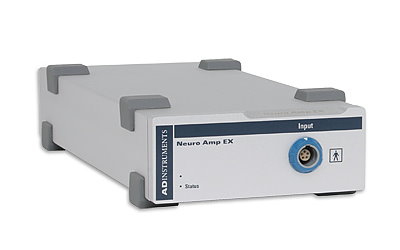Learn microneurography techniques and research trends for the study of nerve stimuli and associated responses in human subjects. In this webinar, Professor Vaughan Macefield from The Baker Heart & Diabetes Institute will discuss current trends in the field.
Abstract:
During this webinar, Professor Vaughan Macefield one of the world's leading neurophysiologists in the field of Microneurography, will share current trends in this field and specifically shares methodology, tips and best-practices that he uses in his lab to answer complex questions about physiological processes
Key Learning Objectives:
- Overview of the NeuroAmp EX
- Recent recordings from the human vagus nerve
- Optimizing signal quality using NeuroAmp EX and LabChart
- Recording from myelinated axons (muscle spindle afferents, Golgi tendon organ afferents, cutaneous afferents) and unmyelinated axons (multi-unit and single unit recordings from postganglionic and sympathetic axons)
- Concurrent recordings of sympathetic nerve activity and fMRI
- Recording from the human cervical vagus nerve
Related resources:
Microneurography – Recording Nerve Traffic Via Intraneural Microelectrodes in Awake Human Subjects »
Data Analysis for Microneurography – LabChart Software Demonstration »
Data Collection & Analysis in Human Autonomic Research: How to Guide Successful Testing»
Measuring and Quantifying Sympathetic Control of the Cutaneous Microvasculature»
About the speaker:

Professor Vaughan Macefield
Senior Principal Research Fellow
The Baker Heart & Diabetes Institute
Professor Macefield specializes in recording from single nerve fibres via microelectrodes inserted into the peripheral nerves of awake human subjects (microneurography), and is best known for developing the methodology for recording the firing properties of single, type-identified, sympathetic neurones supplying muscle and skin and, most recently, for developing the methodology for recording muscle sympathetic nerve activity (MSNA) at the same time as performing functional magnetic resonance imaging (fMRI) of the brain. Using MSNA-coupled fMRI he has identified cortical and subcortical structures in the brain responsible for generating spontaneous bursts of MSNA in young and old healthy subjects, and for generating the increase in MSNA and blood pressure in patients with obstructive sleep apnoea. His current NHMRC-supported work uses MSNA-coupled fMRI to examine the central substrates responsible for the high MSNA and blood pressure in renal hypertension, while another aims to identify the neural substrates responsible for the increases in MSNA and blood pressure during long-lasting muscle pain. For the last 15 years he has also been exploring the influence of the vestibular system on MSNA and SSNA, using both electrical and physiological activation of the vestibular apparatus in humans, and recently made the first intraneural recordings from the human vagus nerve in the neck.
Find out more about Vaughan's background, achievements and awards HERE

Neuro Amp EX
The Neuro Amp EX is a low noise and high gain neural amplifier device which makes it suitable for all recording environments requiring a wide bandwidth (100 Hz to 5 kHz) and a high signal to noise ratio. As a front-end device, the Neuro Amp gives researchers the ability to measure nerve activity using the microneurographic technique, when using a PowerLab and LabChart.
Contact us for more information.